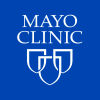Request Demo
Last update 08 May 2025
Atypical Lobular Breast Hyperplasia
Last update 08 May 2025
Basic Info
Synonyms ALH, Atypical Breast Lobular Hyperplasia, Atypical Lobular Breast Hyperplasia + [11] |
Introduction Lobular neoplasia characterized by lobular epithelial proliferation that does not completely fill the lobular unit of the breast. |
Related
1
Drugs associated with Atypical Lobular Breast HyperplasiaTarget |
Mechanism ERs modulators |
Active Org. |
Originator Org. |
Active Indication |
Inactive Indication |
Drug Highest PhasePhase 2 |
First Approval Ctry. / Loc.- |
First Approval Date20 Jan 1800 |
12
Clinical Trials associated with Atypical Lobular Breast HyperplasiaNCT05178498
Longitudinal Study Evaluating the Impact of Dietary Inflammatory Potential on Breast Cancer Risk in a Cohort of Women Followed in the Breast Cancer Prevention Clinic at the Ohio State University Comprehensive Cancer Center- James Cancer Hospital and Solove Research Institute
This study evaluates the association of dietary inflammatory potential with breast cancer risk. Information collected in this study may help doctors to identify modifiable risk factors, screen high risk patients early, improve prevention strategies, and provide timely intervention for early therapeutic management as needed.
Start Date25 Oct 2023 |
Sponsor / Collaborator |
NCT05755269
Genetic Risk Estimation in Breast Cancer and Assessing Health Disparities
This study evaluates whether adding a polygenic risk score evaluation to standard breast cancer risk assessment tools helps African American and Hispanic women make more informed decisions about accepting additional breast cancer screening and prevention strategies. Traditional breast cancer risk assessments rely mostly on the presence of standard clinical risk factors including family history, reproductive history, and mammographic breast density. This information can be combined with validated risk estimation models to provide a measure of a patient's 10 year and lifetime risk for breast cancer. A polygenic risk score helps to estimate breast cancer risk in a more individualized way by evaluating a patient's genetics. Adding a polygenic risk score evaluation to traditional screening techniques may help minority women make more informed decisions about screening and prevention strategies for breast cancer.
Start Date14 Mar 2023 |
Sponsor / Collaborator |
ChiCTR2100048029
An open, single-arm design clinical trial on the treatment of hyperplasia of mammary gland by Yin and Yang double acupoint method
Start Date01 Sep 2021 |
Sponsor / Collaborator- |
100 Clinical Results associated with Atypical Lobular Breast Hyperplasia
Login to view more data
100 Translational Medicine associated with Atypical Lobular Breast Hyperplasia
Login to view more data
0 Patents (Medical) associated with Atypical Lobular Breast Hyperplasia
Login to view more data
220
Literatures (Medical) associated with Atypical Lobular Breast Hyperplasia01 May 2025·Journal of Clinical and Experimental Hepatology
Drug-induced Autoimmune-like Hepatitis With Pathological Features of Giant Cell Hepatitis
Article
Author: Lin, Haiyan ; Ruan, Mei ; Yan, Yongqin ; Zeng, Zhiyu ; Yao, Jie ; Li, Dongliang
01 May 2025·AIDS
Outcomes and challenges in adolescents with HIV in France: a nationwide cohort study over 35 years
Article
Author: Frange, Pierre ; Blanche, Stéphane ; Caseris, Marion ; Le Chenadec, Jérôme ; Faye, Albert ; Dollfus, Catherine ; Runel-Belliard, Camille ; Alby-Laurent, Fanny ; Reliquet, Véronique ; Warszawski, Josiane ; Brehin, Camille
01 Apr 2025·Breast Cancer Research and Treatment
Breast hamartomas associated with epithelial atypia and malignancy: are there specific clinical, radiological or pathological features that identify at risk patients?
Article
Author: Dani, Shefali ; Tariq, Naima ; Warren, Madhuri V ; Makhija, Purnima
Analysis
Perform a panoramic analysis of this field.
login
or

AI Agents Built for Biopharma Breakthroughs
Accelerate discovery. Empower decisions. Transform outcomes.
Get started for free today!
Accelerate Strategic R&D decision making with Synapse, PatSnap’s AI-powered Connected Innovation Intelligence Platform Built for Life Sciences Professionals.
Start your data trial now!
Synapse data is also accessible to external entities via APIs or data packages. Empower better decisions with the latest in pharmaceutical intelligence.
Bio
Bio Sequences Search & Analysis
Sign up for free
Chemical
Chemical Structures Search & Analysis
Sign up for free

